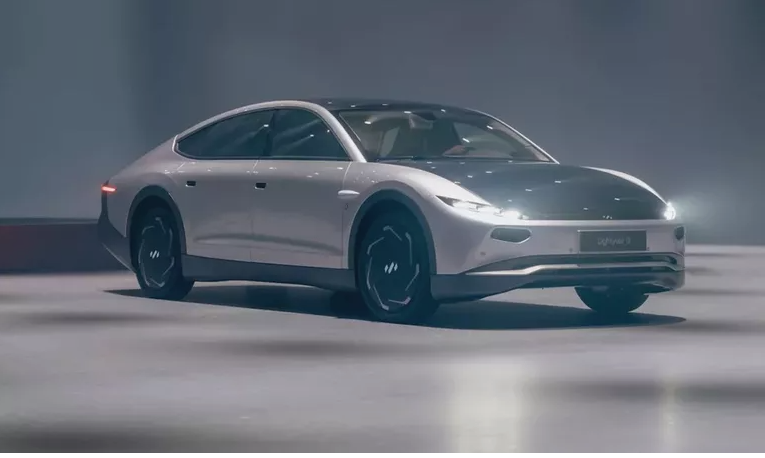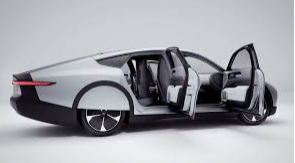The company claims it is the “world’s first production-ready solar car.”
By Marc Carter
View the original article here
Over the past few years, several startups have released one-off solar-powered concept vehicles, but up until now, we have yet to receive a mass-produced solar-powered car. It looks like that will change soon with the introduction of the Lightyear 0—an electric sedan that gets its power from the sun.
Lightyear is a Dutch startup that has an ambitious goal to start production of the Lightyear 0 this fall with the first deliveries starting in November. The Lightyear 0 features 5 square meters of double-curved solar arrays that can charge the electric vehicle while it’s driving or parked outdoors. The solar panels can add up to 43 miles (70 kilometers) of range a day in addition to its estimated 388 miles (625 kilometers) on Europe’s WLTP cycle.
This means drivers can literally drive for months without having to use an outlet or public charger. Lightyear estimates people who drive an average daily commute of about 22 miles, could go up to seven months between charges. Lightyear estimates the solar panels can add up to 6,835 miles (11,000 kilometers) of range per year.
“Today is the day we’ve all been waiting for since us five co-founders sat in a kitchen sketching out our dream of building the most sustainable car on the planet,” says Lightyear co-founder and CEO Lex Hoefsloot. “In 2016, we only had an idea; three years later, we had a prototype. Now, after six years of testing, iterating, (re)designing, and countless obstacles, Lightyear 0 is proof that the impossible is actually possible.”
In addition to its groundbreaking solar panels, the Lightyear 0 also stands out from current EVs with its four in-wheel motors. The electric motors generate a combined 174 horsepower and 1,269 pound-feet of torque, which can accelerate the Lightyear 0 from 0-62 mph in 10 seconds and a top speed of 100 mph.
With an energy use of 10.5 kWh per 62 miles (100 kilometers), Lightyear says it is the most efficient electric vehicle and its drag coefficient of less than 0.19 makes it the most aerodynamic family car yet. Although the Lightyear 0 is more than 16.4 feet long, it only weighs 3,472 pounds.
Inside the Lightyear 0 focuses on sustainability and minimalism with naturally-sourced and vegan materials, like microfiber suede seats and rattan palm detailing. Its interior also features a 10.1-inch touchscreen infotainment system that runs the Android Auto operating system.
Hoefsloot said in a statement that the Lightyear 0 is unique from electric vehicles: “Electric cars are a step in the right direction, but they have a scaling problem. By 2030, we can expect 84 million electric vehicles (EVs) on roads in Europe alone. There’s no hiding from it, access to charging stations will not keep up with the demand for electric cars. To minimize plug-charging and maximize range, the industry’s strategy, so far, has been to add batteries. That increases the carbon footprint of production and, in turn, boosts weight and the need for high-power charging stations. Our strategy flips that approach. Lightyear 0 delivers more range with less battery, reducing weight and CO₂ emissions per vehicle.”
The company only plans to build 946 Lightyear 0 vehicles a year. It hasn’t announced the market distribution.
The Lightyear 0 is definitely not cheap with a starting price of €250,000 ($263,243 USD), which means accessibility will be a barrier to entry for most consumers. The good news is the company is also working on a second model that will better appeal to the mass market with its €30,000 ($31,589 USD) starting price. Production of its second EV will begin in late 2024 or early 2025.
There’s still much to be seen with the Lightyear 0. While the most sustainable way to view car ownership is to not own a car, the reality is many people need vehicles in their day-to-day lives and Lightyear’s concepts spotlight innovation in the car space.


